A photograph of 19 flag-draped body
bags lying in the burn area emerged in the days immediately following the
Yarnell Hill tragedy and in short order there has been debate regarding whether
such an image is appropriate and whether it might be too intrusive. While I rarely editorialize here, I will say
in this case, that the sad image of 19 flag-draped forms is a fitting eulogy to
young men who gave up their very existence in the fight against wildland
fire. I only wish things had been the
same 75 years ago when flames overtook the CCC crews at Blackwater; however in
their case, there were no flags, only canvas.
I’ve chosen not to post the final
image of the Yarnell Hill 19 lying near where they likely fell but anyone with
an ounce of internet savvy will be able to find it. On the other hand, I am posting a picture
from the 1937 Blackwater Creek tragedy with the hope that it will generate some
thought regarding how much things have changed in 75 years of forestry,
firefighting and humanity.
In the hours immediately after the 1937
Blackwater blow up and its tragic consequences, fire suppression work all but
ceased as crews fanned out into the burn to search for victims. Most of the dead were discovered in the
process of extricating another group – the living, the dead and dying – who had
been trapped by the blow up. With help
from rescue parties, the scarred and fatigued survivors carried the dead and
dying down to the lower fire camps where they were tended to before being transported
to hospitals in Cody, Wyoming.
It strikes me that retrieval of the
dead in cases like the Yarnell Hill Fire, as with other recent tragedies that
have preceded it, must be undertaken as a mix of requiem and a search for
investigative clarity. There are honors
to be rendered but also questions to be answered. The impulse to mourn will be interrupted, abruptly
and perhaps grudgingly, by the desire to find answers, to learn lessons and
perhaps even assess blame. I do not get
the impression that such was the case 75 years ago on the fire scarred
hillsides of a forest near Yellowstone National Park. The body of Ranger Al Clayton and the six men
who died with him were removed in the late morning and early afternoon of
August 22, 1937 and a local newspaper reporter wrote of the scene:
Seven pack-horses, each with angular forms
wrapped in canvas and lashed to the saddles, filed slowly out of the wooded
ravine and stopped at the cars. Over a
hundred wide-eyed, ashen-gray youngsters, just ready to go to the fire line,
pushed forward, drawn by a chilling magnetism to see what their former comrades
looked like.
No flag-draped body bags, no honor
guard processions, just canvas wrapped parcels somewhat ghoulishly exhibited
for all to see in a grim processional.
In the midst of the death and fear – in spite of the death and fear - fresh
CCC crews continued to arrive until at one point more than 500 men were
fighting the Blackwater Fire. By noon on
Tuesday, August 24th the fire was listed as officially under control and on the
following day the Forest Service supervisors began to release CCC crews to
return to their camps and their regular duties.
Finally, on August 31st, ten days after the fatal blow up and almost two
weeks after lightening started a seemingly inconsequential blaze, the last of
the firefighting crews were disbanded, having constructed more than eleven
miles of fire line in the process of extinguishing the Blackwater Fire.
Photos of the recovery of the
Blackwater victims appeared in the August 1941 issue of Sports Afield and perhaps elsewhere and I am unaware of any
backlash at the time. Perhaps the
passage of four years’ time helped dull the impact. Perhaps the amnesia had already begun to set
in by that point. Perhaps the growing
global carnage diminished Blackwater’s fiery cataclysm down to seemingly
nothing by comparison. Perhaps people
simply had thicker skins 75 years ago.
I have argued that the dead of
Blackwater have not received the same sort of recognition as their firefighting
brethren who have perished on the fire lines in recent memory, but one thing
seems constant over the decades. Praised
or unsung, the heroes have done their work and perished in the doing. The dismal grim business remains for us, the
living, to undertake and sadly that business won’t be quick or clean.
You can read an earlier, more detailed post about the Blackwater
tragedy here.
©Michael I. Smith, 2013
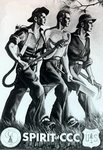
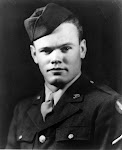





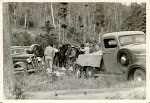
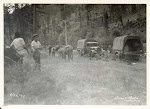




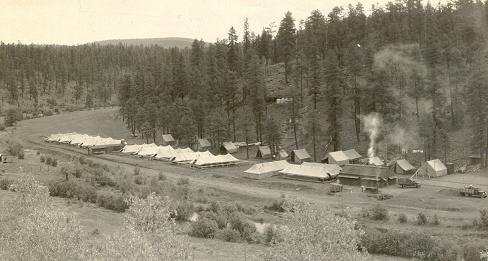


2 comments:
It might be more appropriate to consider finding some historical information, even the investigation report, of the Rock Ck Fire of 1939. Like the Yarnell fire, it appears that the Rock Ck fire fatalities (5 CCC members) were killed as a result of a storm causing a sudden, violent wind-change over the fire area.
As that is what happened at Yarnell (and in the Dude fire in the same area 23 years earlier), it is probably appropriate to examine that tragedy - more so than the much better known Blackwater Fire of 1937. It would help make the point that the effect of storms on fires, especially on days of high fire danger, is known and all too often predicted in advance.
Lest we forget
Thank you for visiting Forest Army, Aaron, and for your thoughtful comments regarding this post. Unfortunately, I'm afraid you've missed the focus of my comparison between Blackwater and Yarnell Hill. The post is meant to highlight what happens after tragedies of this type. I think you'll agree there is a stark difference between the canvas wrapped corpses draped across pack horses at Blackwater and the flag-draped body bags photographed after Yarnell Hill. I was not making a comparison between the fires themselves.
I have a portion of the Rock Creek Fire report that I obtained at the National Archives and Records facility in Denver earlier this year and I think you are right that it's time I posted information about that event as well. I won't likely do so as a comparison between fire events or fire behaviors though since I'm not an expert in fire fighting or fire behavior.
Thank you again for visiting and for posting comments; I hope that my clarification will help put the post in better context and I sincerely hope that you'll continue to check back here and at the CCC Resource Page.
Post a Comment